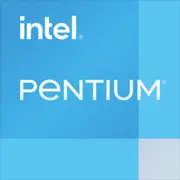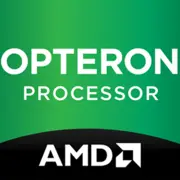Advantages
- Higher Technology: 14 nm (14 nm vs 32 nm)
- Higher Memory Type: DDR4-2133/2400 | DDR3L-1333/1600 @ 1.35V (DDR4-2133/2400 | DDR3L-1333/1600 @ 1.35V vs DDR3)
- Newer Launch Date: January 2017 (January 2017 vs November 2012)
- More Total Cores: 16 (2 vs 16)
- Larger L3 Cache: 8MB per die (3 MB vs 8MB per die)
Basic
Intel
Label Name
AMD
January 2017
Launch Date
November 2012
Desktop
Platform
Server
G4600T
Model Name
?
The Intel processor number is just one of several factors - along with processor brand, system configurations, and system-level benchmarks - to be considered when choosing the right processor for your computing needs.
Opteron 6366 HE
Kaby Lake
Code Name
Abu Dhabi
-
Generation
Opteron (Abu Dhabi)
CPU Specifications
2
Total Cores
?
Cores is a hardware term that describes the number of independent central processing units in a single computing component (die or chip).
16
4
Total Threads
?
Where applicable, Intel® Hyper-Threading Technology is only available on Performance-cores.
16
3.00 GHz
Basic Frequency
-
-
Performance-core Base Frequency
1.8 GHz
-
Performance-core Max Turbo Frequency
?
Maximum P-core turbo frequency derived from Intel® Turbo Boost Technology.
3.1 GHz
Yes
Intel Hyper-Threading Technology
?
Intel® Hyper-Threading Technology (Intel® HT Technology) delivers two processing threads per physical core. Highly threaded applications can get more work done in parallel, completing tasks sooner.
-
No
Intel Turbo Boost Technology
?
Intel® Turbo Boost Technology dynamically increases the processor's frequency as needed by taking advantage of thermal and power headroom to give you a burst of speed when you need it, and increased energy efficiency when you don’t.
-
-
L1 Cache
768K
-
L2 Cache
16MB
3 MB
L3 Cache
8MB per die
-
Unlocked Multiplier
No
-
Multiplier
9.0
-
Bus Frequency
200MHz
FCLGA1151
CPU Socket
?
The socket is the component that provides the mechanical and electrical connections between the processor and motherboard.
AMD Socket G34
14 nm
Technology
?
Lithography refers to the semiconductor technology used to manufacture an integrated circuit, and is reported in nanometer (nm), indicative of the size of features built on the semiconductor.
32 nm
35 W
TDP
85 W
92°C
Max. Operating Temperature
?
Junction Temperature is the maximum temperature allowed at the processor die.
-
-
PCIe Version
?
PCI Express is a high-speed serial computer expansion bus standard used for connecting high-speed components, replacing older standards such as AGP, PCI, and PCI-X. It has gone through multiple revisions and improvements since its initial release. PCIe 1.0 was first introduced in 2002, and in order to meet the growing demand for higher bandwidth, subsequent versions have been released over time.
2
3.0
PCI Express Version
?
PCI Express Revision is the supported version of the PCI Express standard. Peripheral Component Interconnect Express (or PCIe) is a high-speed serial computer expansion bus standard for attaching hardware devices to a computer. The different PCI Express versions support different data rates.
-
16
Number of PCI Express Lanes
?
A PCI Express (PCIe) lane consists of two differential signaling pairs, one for receiving data, one for transmitting data, and is the basic unit of the PCIe bus. Max # of PCI Express Lanes is the total number of supported lanes.
-
Yes
Intel 64
?
Intel® 64 architecture delivers 64-bit computing on server, workstation, desktop and mobile platforms when combined with supporting software.¹ Intel 64 architecture improves performance by allowing systems to address more than 4 GB of both virtual and physical memory.
-
64-bit
Instruction Set
?
The instruction set is a hard program stored inside the CPU that guides and optimizes CPU operations. With these instruction sets, the CPU can run more efficiently. There are many manufacturers that design CPUs, which results in different instruction sets, such as the 8086 instruction set for the Intel camp and the RISC instruction set for the ARM camp. x86, ARM v8, and MIPS are all codes for instruction sets. Instruction sets can be extended; for example, x86 added 64-bit support to create x86-64. Manufacturers developing CPUs that are compatible with a certain instruction set need authorization from the instruction set patent holder. A typical example is Intel authorizing AMD, enabling the latter to develop CPUs compatible with the x86 instruction set.
-
Up to 1x16 | 2x8 | 1x8+2x4
PCI Express Configurations
?
PCI Express (PCIe) Configurations describe the available PCIe lane configurations that can be used to link to PCIe devices.
-
-
Transistor Count
2.4 billions
Memory Specifications
DDR4-2133/2400 | DDR3L-1333/1600 @ 1.35V
Memory Type
?
Intel® processors come in four different types: Single Channel, Dual Channel, Triple Channel, and Flex Mode. Maximum supported memory speed may be lower when populating multiple DIMMs per channel on products that support multiple memory channels.
DDR3
64 GB
Max Memory Size
?
Max memory size refers to the maximum memory capacity supported by the processor.
-
2
Memory Channels
?
The number of memory channels refers to the bandwidth operation for real world application.
-
8 GT/s
Bus Speed
-
Yes
ECC Memory Supported
?
ECC Memory Supported indicates processor support for Error-Correcting Code memory. ECC memory is a type of system memory that can detect and correct common kinds of internal data corruption. Note that ECC memory support requires both processor and chipset support.
-
-
ECC Memory Support
No
GPU Specifications
Intel® HD Graphics 630
GPU Name
-
-
Integrated Graphics Model
?
An integrated GPU refers to the graphics core that is integrated into the CPU processor. Leveraging the processor's powerful computational capabilities and intelligent power efficiency management, it delivers outstanding graphics performance and a smooth application experience at a lower power consumption.
N/A
1.05 GHz
Graphics Frequency
?
Graphics max dynamic frequency refers to the maximum opportunistic graphics render clock frequency (in MHz) that can be supported using Intel® HD Graphics with Dynamic Frequency feature.
-
350 MHz
Graphics Base Frequency
?
Graphics Base frequency refers to the rated/guaranteed graphics render clock frequency in MHz.
-
64 GB
Graphics Video Max Memory
-
Yes | at 60Hz
4K Support
-
12
DirectX Support
?
DirectX* Support indicates support for a specific version of Microsoft’s collection of APIs (Application Programming Interfaces) for handling multimedia compute tasks.
-
4096x2304@60Hz
Max Resolution (eDP - Integrated Flat Panel)
?
Max Resolution (Integrated Flat Panel) is the maximum resolution supported by the processor for a device with an integrated flat panel (24bits per pixel & 60Hz). System or device display resolution is dependent on multiple system design factors; actual resolution may be lower on your device.
-
4096x2304@60Hz
Max Resolution (DP)
?
Max Resolution (DP) is the maximum resolution supported by the processor via the DP interface (24bits per pixel & 60Hz). System or device display resolution is dependent on multiple system design factors; actual resolution may be lower on your system.
-
4096x2304@24Hz
Max Resolution (HDMI)
?
Max Resolution (HDMI) is the maximum resolution supported by the processor via the HDMI interface (24bits per pixel & 60Hz). System or device display resolution is dependent on multiple system design factors; actual resolution may be lower on your system.
-
3
Number of Displays Supported
-
Miscellaneous
Yes
Intel Virtualization Technology (VT-x)
?
Intel® Virtualization Technology (VT-x) allows one hardware platform to function as multiple “virtual” platforms. It offers improved manageability by limiting downtime and maintaining productivity by isolating computing activities into separate partitions.
-
Yes
Intel Virtualization Technology for Directed I/O (VT-d)
?
Intel® Virtualization Technology for Directed I/O (VT-d) continues from the existing support for IA-32 (VT-x) and Itanium® processor (VT-i) virtualization adding new support for I/O-device virtualization. Intel VT-d can help end users improve security and reliability of the systems and also improve performance of I/O devices in virtualized environments.
-
Intel® SSE4.1 | Intel® SSE4.2
Intel Standard Manageability (ISM)
?
Intel® Standard Manageability is the manageability solution for Intel vPro® Essentials platforms and is a subset of Intel® AMT with out-of-band management over Ethernet and Wi-Fi, but no KVM or new life cycle management features.
-
Yes
Enhanced Intel SpeedStep Technology
?
Enhanced Intel SpeedStep® Technology is an advanced means of enabling high performance while meeting the power-conservation needs of mobile systems. Conventional Intel SpeedStep® Technology switches both voltage and frequency in tandem between high and low levels in response to processor load. Enhanced Intel SpeedStep® Technology builds upon that architecture using design strategies such as Separation between Voltage and Frequency Changes, and Clock Partitioning and Recovery.
-
Yes
Execute Disable Bit
?
Execute Disable Bit is a hardware-based security feature that can reduce exposure to viruses and malicious-code attacks and prevent harmful software from executing and propagating on the server or network.
-
3 MB
Cache
?
CPU Cache is an area of fast memory located on the processor. Intel® Smart Cache refers to the architecture that allows all cores to dynamically share access to the last level cache.
-
Yes
Intel AES New Instructions
?
Intel® AES New Instructions (Intel® AES-NI) are a set of instructions that enable fast and secure data encryption and decryption. AES-NI are valuable for a wide range of cryptographic applications, for example: applications that perform bulk encryption/decryption, authentication, random number generation, and authenticated encryption.
-
Yes
Intel Boot Guard
?
Intel® Device Protection Technology with Boot Guard helps protect the system’s pre-OS environment from viruses and malicious software attacks.
-
Yes
Intel Clear Video HD Technology
?
Intel® Clear Video HD Technology, like its predecessor, Intel® Clear Video Technology, is a suite of image decode and processing technologies built into the integrated processor graphics that improve video playback, delivering cleaner, sharper images, more natural, accurate, and vivid colors, and a clear and stable video picture. Intel® Clear Video HD Technology adds video quality enhancements for richer color and more realistic skin tones.
-
Yes
Intel Clear Video Technology
-
Yes
Intel VT-x with Extended Page Tables (EPT)
?
Intel® VT-x with Extended Page Tables (EPT), also known as Second Level Address Translation (SLAT), provides acceleration for memory intensive virtualized applications. Extended Page Tables in Intel® Virtualization Technology platforms reduces the memory and power overhead costs and increases battery life through hardware optimization of page table management.
-
Yes
Intel InTru 3D Technology
-
Yes
Intel OS Guard
-
4.4
OpenGL Support
?
OpenGL (Open Graphics Library) is a cross-language, multi-platform API (Application Programming Interface) for rendering 2D and 3D vector graphics.
-
Yes
Intel Quick Sync Video
?
Intel® Quick Sync Video delivers fast conversion of video for portable media players, online sharing, and video editing and authoring.
-
Benchmarks
Geekbench 5 Single Core
Pentium G4600T
729
+64%
Opteron 6366 HE
444
Geekbench 5 Multi Core
Pentium G4600T
1460
Opteron 6366 HE
3469
+138%
Passmark CPU Single Core
Pentium G4600T
1772
+77%
Opteron 6366 HE
1003
Passmark CPU Multi Core
Pentium G4600T
3055
Opteron 6366 HE
5613
+84%
Share in social media
Or Link To Us
<a href="https://cputronic.com/cpu/compare/intel-pentium-g4600t-vs-amd-opteron-6366-he" target="_blank">Intel Pentium G4600T vs AMD Opteron 6366 HE</a>

